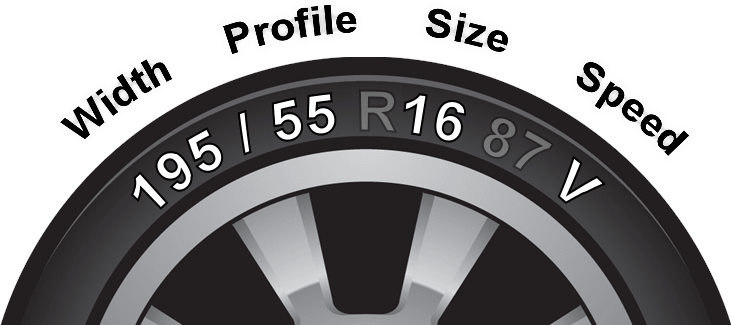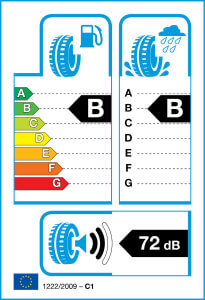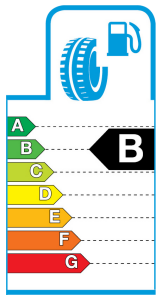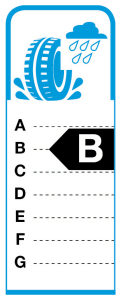

Tyre Labelling
The New EU Tyre Label
What is EU Tyre Labelling About

To reduce the impact tyres have on the environment and to promote road safety, a new EU regulation came into force on 1 November 2012 that is designed to make it easier for motorists to compare different tyres. From this date all new tyres for cars, vans, 4x4 and most trucks have to display a standard format label that indicates three key aspects of a tyre; fuel efficiency, wet grip performance and external rolling noise. Similar in style to energy labels for white goods, these labels provide comparable information about a tyre regardless of the brand or tread pattern. By using clear pictograms, the label allows motorists to make informed choices when buying tyres, ranked on a scale from A (best) to G (worst). Certain types of tyre, such as; T-type temporary use tyres, off-road tyres, racing tyres, vintage car tyres and retread tyres are excluded from this regulation.
Fuel Efficiency

Tyres are responsible for between 20 and 30% of a vehicle's fuel consumption. As a tyre rolls it uses energy and so a tyre that has a lower rolling resistance will use less energy and this has a direct impact on fuel efficiency and CO2 emissions. Choosing tyres ranked A (best) over tyres ranked G (worst) can reduce fuel consumption by up to 7.5%. This equates to a typical annual fuel saving of 120 litres or £168 (based on 12000 miles and £1.4/l). Currently D is not used on the scale to provide a clear distinction between higher and less efficient tyres.
Wet Grip Performance

Wet grip performance is one of the most important safety characteristics of a tyre. Tyres with good wet grip have shorter braking distances on wet roads. Two types of test are used to measure a tyres grip when braking from 50mph in wet conditions. Results are combined and ranked from A (best) to G (worst) and, like with fuel efficiency, grade D is not used to help more easily distinguish between tyres with shorter and longer braking distances. Each grade equates to a difference in braking distance of approximately 3 meters. Therefore fitting tyres ranked A over those ranked G can reduce braking distance in the wet by 18 meters, which clearly could help avert a road traffic accident.
External Rolling Noise

The inclusion of external rolling noise as a key aspect of a tyre's performance is to encourage motorists to buy low noise tyres and thereby reduce noise pollution. A microphone measures the rolling noise of a car travelling at 50mph with the engine turned off and the results, in decibels, are given for each tyre. In addition 'black sound waves' are used to indicate quieter tyres (1 black sound wave) in comparison to noisier tyres (3 black sound waves). Currently 3 black sound waves is the legal limit, 2 will be a new lower limit to come into effect sometime by 2016 and 1 black sound wave is 3 decibels below this future lower limit. Three decibels may not seem a lot, but it is effectively halving the noise level.
Where are we?
Contact us
We welcome all feedback to improve our service. Please feel free to email us or contact one of the team.





















